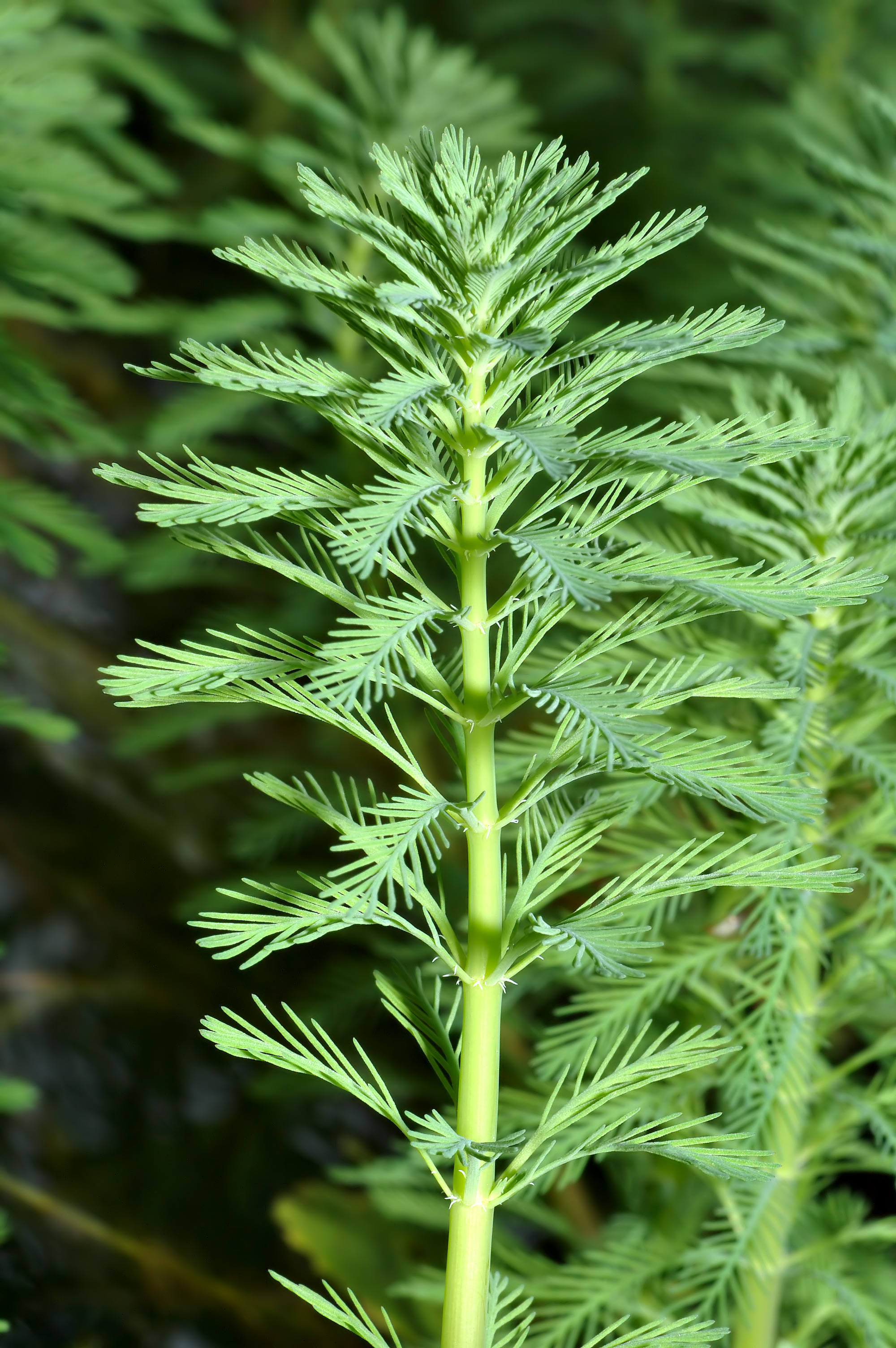Invasive - Eradicate!
No ecological benefits are associated with Parrotfeather within the United States. Parrotfeather is native to the Amazon in South America, but has spread to the east and west coasts of the United States as well as some Midwestern states. It prefers warm mild climates although it can survive temperate winters. Parrotfeather grows best in still waters such as lakes, ponds, quiet streams and drainage ditches, but is able to survive in rivers. Vegetative reproduction is the only dispersal agent because female plants are not found in the United States.

Problems
While parrotfeather may provide cover for some aquatic organisms, it can seriously change the physical and chemical characteristics of lakes and streams. Infestations can alter aquatic ecosystems by shading out the algae in the water column that serve as the basis of the aquatic food web.
The tough stems make it difficult to boat, swim, fish, or water ski. It provides ideal habitat for mosquito larvae and the mass of the plant can cause flooding to occur. Parrotfeather may block passage for salmon and other fish species when they navigate up rivers to spawn. In addition, parrotfeather causes pH and other water quality issues in backwater areas.
Parrotfeather readily takes over lakes, ponds and streams outcompeting native plants. Parrotfeather is an especially problematic plant because it is so difficult to control. Once it gets into a water body, it takes tenacity to eliminate it.
Plant Description:
Parrotfeather is an herbaceous aquatic plant that grows to a length of 6.5 to 16 feet. Its stems are greenish blue with numerous small leaves that resemble feathers. The leaves are either submersed or emergent and grow in whorls of 4 to 6 around the stem.
Emergent stems are bright green in color and can reach up to a foot above the water surface. The emergent leaves are also vibrantly green, grow to 2 inches long, and have 6-18 divisions per leaf. The submersed leaves are only 1.25 inches long with 20-30 divisions per leaf and are dark green and limp. Barely visible flowers grow from between the stem and the emergent leaves.
Hints to Identify
This species is easily confused with the native water milfoils and the invasive Eurasian water milfoil. Look for:
- Bright green fir-tree-like; emergent leaves and stems
- Leaflets arranged in whorls (4-6) around the stem
- Leaflets with feather-like leaf arrangement
- Dense mat of intertwined brownish stems (rhizomes) in the water
- Reddish, feathery-leaved, limp, underwater leaves may be present
Although they are both in the same genus and closely related, neither Eurasian watermilfoil or Northern milfoil have above water leaves.
Common Application Questions
Q. When is the best time to treat?
A. Once water temperatures are around sixty degrees or warmer and the plant is viable.
Q. How often do I need to treat Parrot Feather?
A. Parrot Feather can grow quickly. Wait, watch and see after the initial treatment but two or more applications are not unusual. Be aggressive with this aggressive exotic plant.
| Homeowner Treatment Options |
| Aquathol K |
| Aquathol Super K |
| Imazapyr 4 SL (Emergent Plants Only) |
| Renovate Max G |
| Sonar AS |
| Sonar RTU |
| *Aquatic Biologists recommends implementing preventative management techniques and physical removal prior to, or in conjunction with treatment. |
